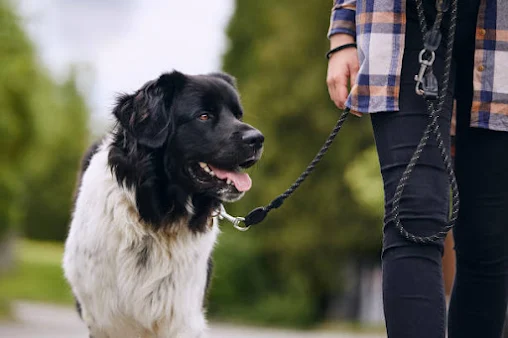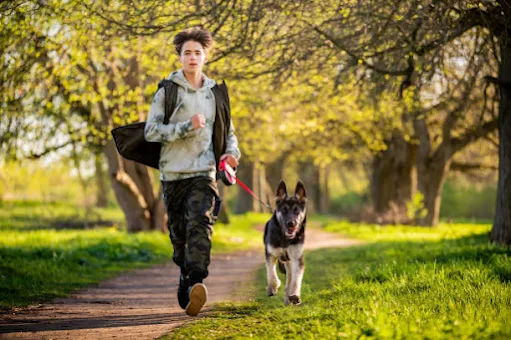Navigate Walks with Confidence: A Guide to Dog Walking Safety
Dog walking is not just a simple activity; it is an opportunity for both you and your furry friend to enjoy the outdoors, get some exercise, and bond. However, it is essential to prioritize safety during these walks to ensure a positive experience for both you and your canine companion. In this comprehensive guide, we will explore the key aspects of dog walking safety, providing you with the knowledge and tools to navigate walks with confidence.
Section 1: Preparing for the Walk
Before embarking on your dog walking adventure, it is crucial to make the necessary preparations to ensure a safe and enjoyable experience for both you and your furry friend.
1.1 Choosing the Right Equipment
Selecting the appropriate equipment is the first step in ensuring dog walking safety. Invest in a sturdy leash and collar or harness that fits your dog comfortably. Avoid retractable leashes as they can be unpredictable and may lead to accidents. Additionally, consider using a reflective collar or leash for walks during low-light conditions to enhance visibility.
1.2 Training and Socialization
Proper training and socialization are key to a well-behaved and safe walking experience. Ensure that your dog is trained to walk on a leash without pulling or lunging. Socialize your dog with other animals and people to minimize the risk of aggressive behavior during walks.
1.3 Plan the Route
Before heading out, plan your walking route carefully. Choose areas with sidewalks or designated walking paths to avoid walking on busy roads. Familiarize yourself with the route to anticipate any potential hazards such as construction zones or aggressive animals in the area.
Section 2: Safety Tips During the Walk
Once you have prepared for the walk, it is essential to follow certain safety tips during the actual walk to ensure the well-being of both you and your furry companion.
2.1 Be Mindful of the Environment
Stay alert and be aware of your surroundings during the walk. Keep an eye out for potential hazards such as broken glass, sharp objects, or toxic substances on the ground. Avoid areas with heavy traffic or crowded spaces that may cause anxiety or stress for your dog.
2.2 Use Positive Reinforcement
Positive reinforcement is a powerful tool in dog training and can be applied during walks as well. Reward your dog for good behavior, such as walking calmly by your side or responding to commands. This encourages positive walking habits and reinforces the bond between you and your furry friend.
2.3 Practice Proper Leash Handling
Maintaining control of the leash is crucial for dog walking safety. Hold the leash securely, keeping it at a length that allows your dog to walk comfortably by your side. Avoid wrapping the leash around your hand or wrist, as this can result in injuries if your dog suddenly pulls or lunges.
2.4 Be Prepared for Encounters
During walks, you may encounter other dogs, animals, or people. It is essential to be prepared for these encounters to ensure a safe and controlled interaction. Keep your dog on a short leash when approaching unfamiliar dogs or animals and ask for permission before allowing any interactions. Be mindful of your dog's body language and intervene if necessary to prevent any potential conflicts.
2.5 Stay Hydrated and Take Breaks
Remember to bring water for both you and your dog during walks, especially on hot days. Stay hydrated to prevent dehydration and heatstroke. Take breaks when needed, allowing your dog to rest and catch their breath. This is particularly important for older dogs or those with health conditions.
Section 3: Dealing with Potential Emergencies
While we strive for safe walks, emergencies can still occur. It is crucial to be prepared and know how to handle potential emergencies that may arise during your dog walking adventures.
3.1 First Aid Kit
Carry a basic first aid kit during walks to address minor injuries or accidents. Include items such as bandages, antiseptic wipes, tweezers, and a muzzle. Familiarize yourself with basic first aid procedures for dogs, such as how to clean wounds or perform CPR if necessary.
3.2 Handling Aggressive Encounters
In the unfortunate event of an aggressive encounter with another dog or animal, it is important to remain calm and composed. Avoid pulling on the leash or yelling, as this may escalate the situation. Instead, try to create distance between the animals and remove your dog from the area calmly and safely.
3.3 Lost Dog Protocol
In case your dog gets lost during a walk, having a plan in place can significantly increase the chances of a safe return. Ensure your dog is wearing identification tags with your contact information. Microchipping your dog is also recommended as an additional form of identification. Familiarize yourself with local lost dog protocols and report the incident immediately.
FAQ: Frequently Asked Questions
Q1: How often should I walk my dog?
A1: The frequency of dog walks depends on various factors such as your dog's age, breed, and energy level. In general, most dogs benefit from at least one walk per day, while high-energy breeds may require more frequent walks.
Q2: Can I use a retractable leash for dog walking?
A2: It is generally recommended to avoid using retractable leashes for dog walking. These leashes can be unpredictable and may lead to accidents or injuries. Opt for a sturdy, fixed-length leash for better control and safety.
Q3: How can I prevent my dog from pulling on the leash during walks?
A3: Training plays a crucial role in preventing leash pulling. Use positive reinforcement techniques to reward your dog for walking calmly by your side. Consider enrolling in obedience classes or working with a professional dog trainer for additional guidance.
Q4: What should I do if my dog encounters an aggressive dog during a walk?
A4: If your dog encounters an aggressive dog during a walk, it is important to remain calm. Keep a firm grip on the leash and try to create distance between the dogs. Avoid yelling or pulling on the leash, as this may escalate the situation. If necessary, seek help from nearby individuals or contact animal control.
Q5: How can I keep my dog hydrated during walks?
A5: Bringing water for your dog during walks is essential, especially on hot days. Consider using a portable water bottle with a built-in bowl or carrying a collapsible water dish. Offer water to your dog at regular intervals and encourage them to drink to stay hydrated.
Conclusion
Dog walking can be a rewarding and enjoyable experience for both you and your furry friend. By following the safety guidelines outlined in this guide, you can navigate walks with confidence, ensuring the well-being and happiness of your canine companion. Remember to prioritize training, be mindful of your surroundings, and be prepared for any potential emergencies. With the right preparation and precautions, you can create memorable and safe adventures during your dog walking journeys. Happy walking!







